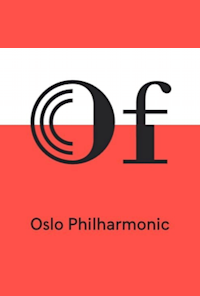Mahler' first symphony with Blomstedt
Mahler’s symphonies arguably put much other orchestral music in the shade. But making the first one stick was no easy task.
Gustav Mahler’s Symphony No. 1 received its world premiere in Budapest in 1889, with the composer himself conducting the Budapest Philharmonic. At this first concert, the work was presented as a symphonic poem. It received a mixed reaction from the public which was not overwhelmingly positive. The composer, who would eventually be considered one of the greatest symphonists of our time, struggled for years to find the right form for the work.
With the next few performances in mind, Mahler wrote clarifying texts which were intended to help potentially confused listeners to understand what the music was about. The work was given the title Titan, a Tone Poem in Symphonic Form, named after a novel by the German writer Jean Paul, and the first movement was given the title “Nature awakens after a long winter”. But for the premiere in Berlin in 1896 he crossed out both the title, the text and the second movement. The end result, consisting of four movements, he called Symphony in D-Major.
It is possible that Mahler did not wish to limit the possibilities for interpretation which such a clarifying text was likely to impose. The composer, whose famous declaration that a symphony must encompass the whole world and contain everything, had created a work which was uncommonly rich in varied musical expressions, moods and styles − and emotional possibilities. The work which many early listeners − among them Mahler’s future wife Alma Schindler − turned their noses up at, has become one of his most popular.
The introduction in the first movement might serve as a good example of the difference in influence audiences have today compared to when the symphony was first performed. Few listeners today, if any, would feel provoked by the long drawn-out A note which introduces the symphony. Mahler built on Anton Bruckner’s muted, searching introductions, which were again built on Beethoven’s Ninth Symphony. Yet no one had written it so softly nor drawn it out so far as Mahler did here.
The second movement is a lively ländler, based on the Austrian folk dance; Mahler’s answer to the traditional scherzo- or trio movement. The third movement brings with it a strong change in mood with a funeral march, inspired by the fairy tale about a hunter’s funeral and in a version of the children’s song Frère Jacques in minor key. The fourth movement, Sturmisch bewegt, begins with a violent outburst and contains some of the most powerful writing for orchestra that has ever been heard in a concert hall.
The Swedish conductor Herbert Blomstedt is a legend in his field; he was Oslo Philharmonic Orchestra’s Chief conductor in the 1960s and has since enjoyed a remarkable career, with principal conductorships in San Francisco, Dresden and Leipzig. Soloist Christian Ihle Hadland is one of Norway's foremost pianists.

